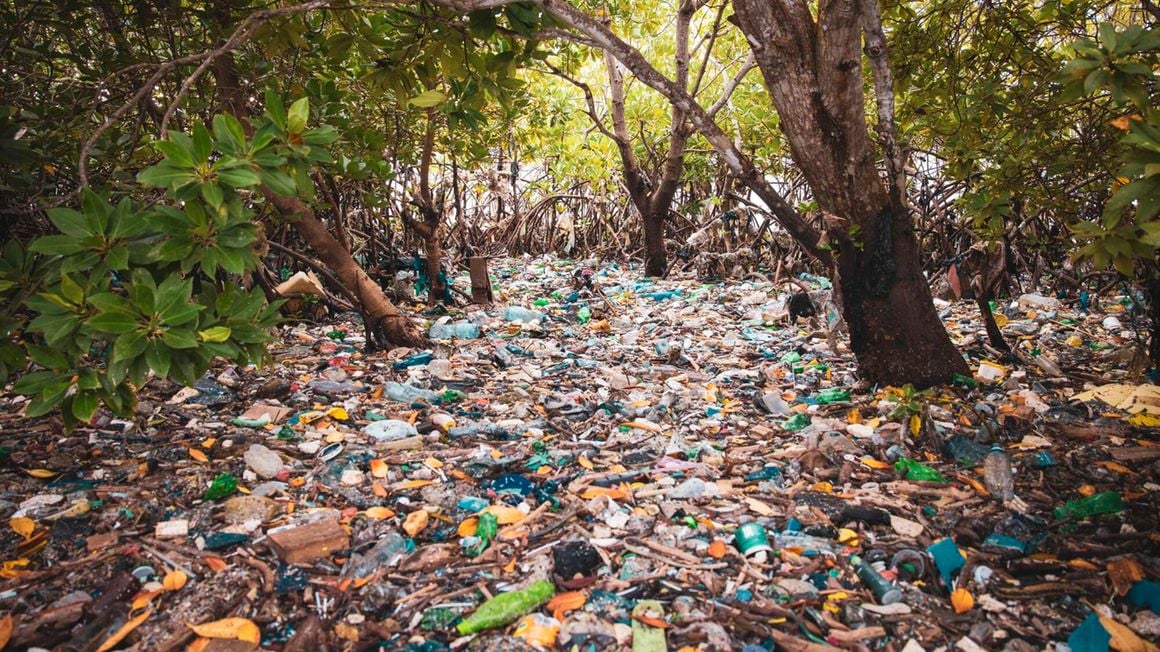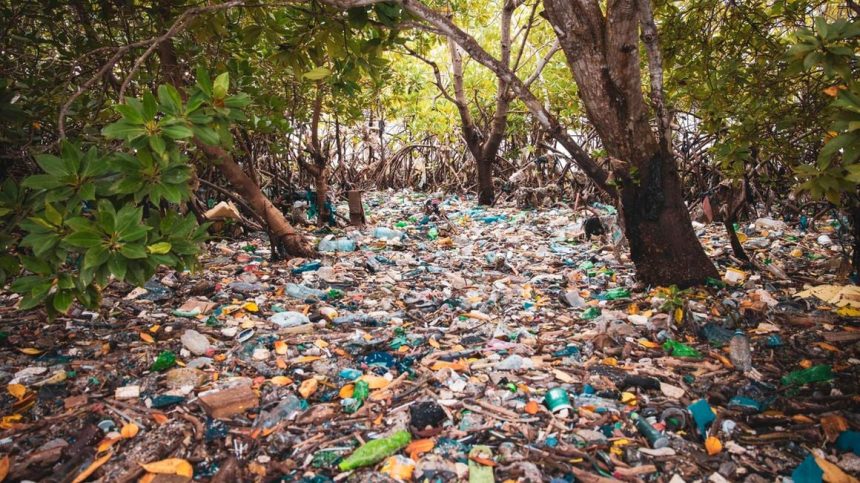Under the scorching midday sun of Mahoo village in Taita Taveta County, silt deposits and rocks cover the pathway of Mwanguwa Ravine, revealing patches of steep areas that when it rains floods.
Without water, it is safe to navigate the ravine, but walking through the deposits of silt, you notice parts have been turned into landfill sites, carrying mostly used diapers, plastic bags and bottles.
Mwanguwa is one of several ravines in the area that pour their waters into Njoro Springs, which is connected to River Lumi. This river empties into Lake Jipe, an inter-territorial lake straddling the borders of Kenya and Tanzania.
This lake is a shallow backwater of the Lumi River, which afterwards becomes the Ruvu River, and enters the Nyumba ya Mungu Reservoir in Tanzania.
After joining there with the Kikuletwa hot spring, the stream flows as the Pangani River into the Indian Ocean.
And so, other than causing health risks to thousands who depend on water from all these sources, this waste and particularly plastic refuse, poses a serious environmental danger to the Indian Ocean.
According to Grantone Mwandawiro, the Taita Taveta county executive committee member for Water, Sanitation, Environment Climate Change and Natural Resources, plastic refuse disposal is a thorny issue.
In a 2022 Municipal Solid Waste Management Audit Report, the county indicates that most of the mismanaged plastic waste end up in water bodies through drainage channels since most of the population without collection services dump waste in storm drains.
According to the report, the county generates 3,329 tonnes of plastic waste per year.

Kenya consumes about 1.3 million tonnes of plastics per year; 27 percent is collected and eight percent is recycled.
Kenya imposed a ban on plastic carrier bags in 2017, which was later reviewed to include single-use plastics in protected areas
According to the National Environment Management Authority (Nema), land-based activities account for about 80 percent of all marine litter found in Kenya’s oceans, rivers, and beaches with the Indian Ocean bearing the biggest brunt.
In October 2021, the European Journal of Sustainable Development Research, published a joint study by five scientists from the University of Nairobi, the University of Kwa Zulu Natal, and the Kenya Marine and Fisheries Research Institute that painted a horrifying reality of a high presence of microplastics — fragments of plastics— in Kenya’s Indian Ocean.
According to the study, the concentration of MPs in the surface waters along the Kenyan coastline was higher compared to other parts of the world.
Kevin Lunzalu, a marine ecologist, says when plastics enter aquatic or marine ecosystems, they don’t degrade but break down into microplastics.
“This takes thousands of years to break down, making their impact on marine ecosystems everlasting,” explains Mr Lunzalu.
Amos Wemanya, an environmental scientist, says the functionality, quality of ecosystem services, and resilience of the ocean are impacted by a new wave of human-induced threats resulting from plastics.
Read: Reconsider scrapping duty on local plastics
“Since microplastics have a very long lifespan, they continually absorb organic pollutants as they stay in the marine environment, making them even more dangerous to ocean life and humans,” explains Wemanya.
Microplastics compromise how marine animals function, causing entanglement and ingestion that can be lethal.
“The tiny plastic fragments are persistent in the marine ecosystem and due to their small size in nature, these fragments are mistaken as food and ingested by a range of marine animals,” explains Lunzalu.
Endangered marine species like sea turtles face more threat from microplastics, he says.
“High concentrations of small plastic fragments alter the temperatures of the sand on the nesting beaches, which results in the artificial determination of the sex rations of the turtles. For juveniles and adults, the harm mainly comes from direct ingestion, causing internal injuries.”
Humans are not exempted from the impact of microplastic pollution since they depend on fish from the ocean and its adjoining ecosystems.
Research published in March by ScienceDirect Journal estimated that close to 15 percent of the microplastics in the guts studied have the potential to translocate gut barriers of fish into muscles where they get ingested by humans.
But experts remain positive.
According to Lunzalu, though it is nearly impossible to eradicate microplastics in the oceans due to their quantities, there is hope.
Kenya has put in place frameworks and regulations to reduce single-use plastics use, mitigate the impact on the environment, and enhance consumer behaviour. This is backed by international protocols.
At the individual level, experts say it is possible to reduce ocean-bound plastics by trimming the consumption of items packaged in or made from single-use plastics.



